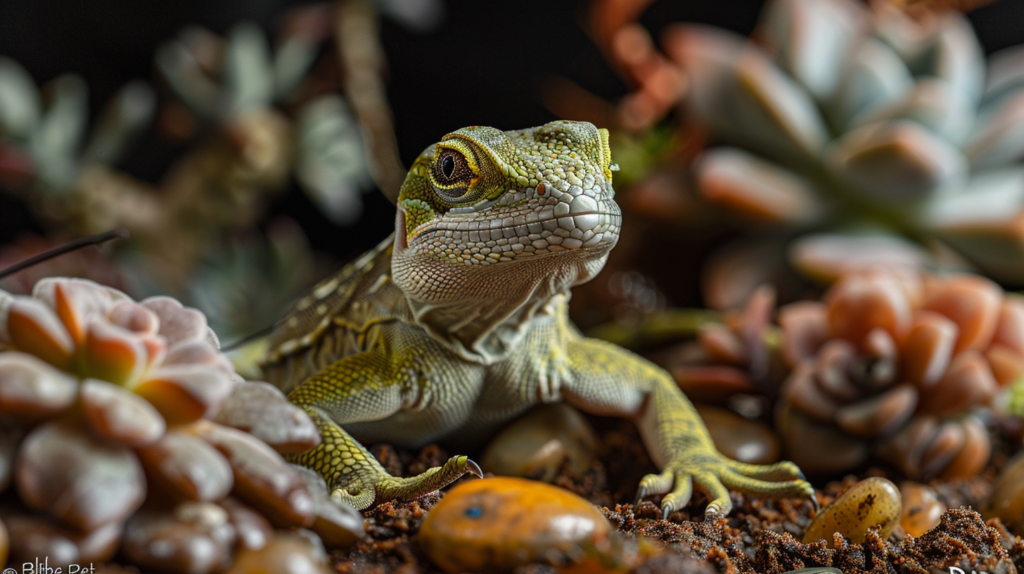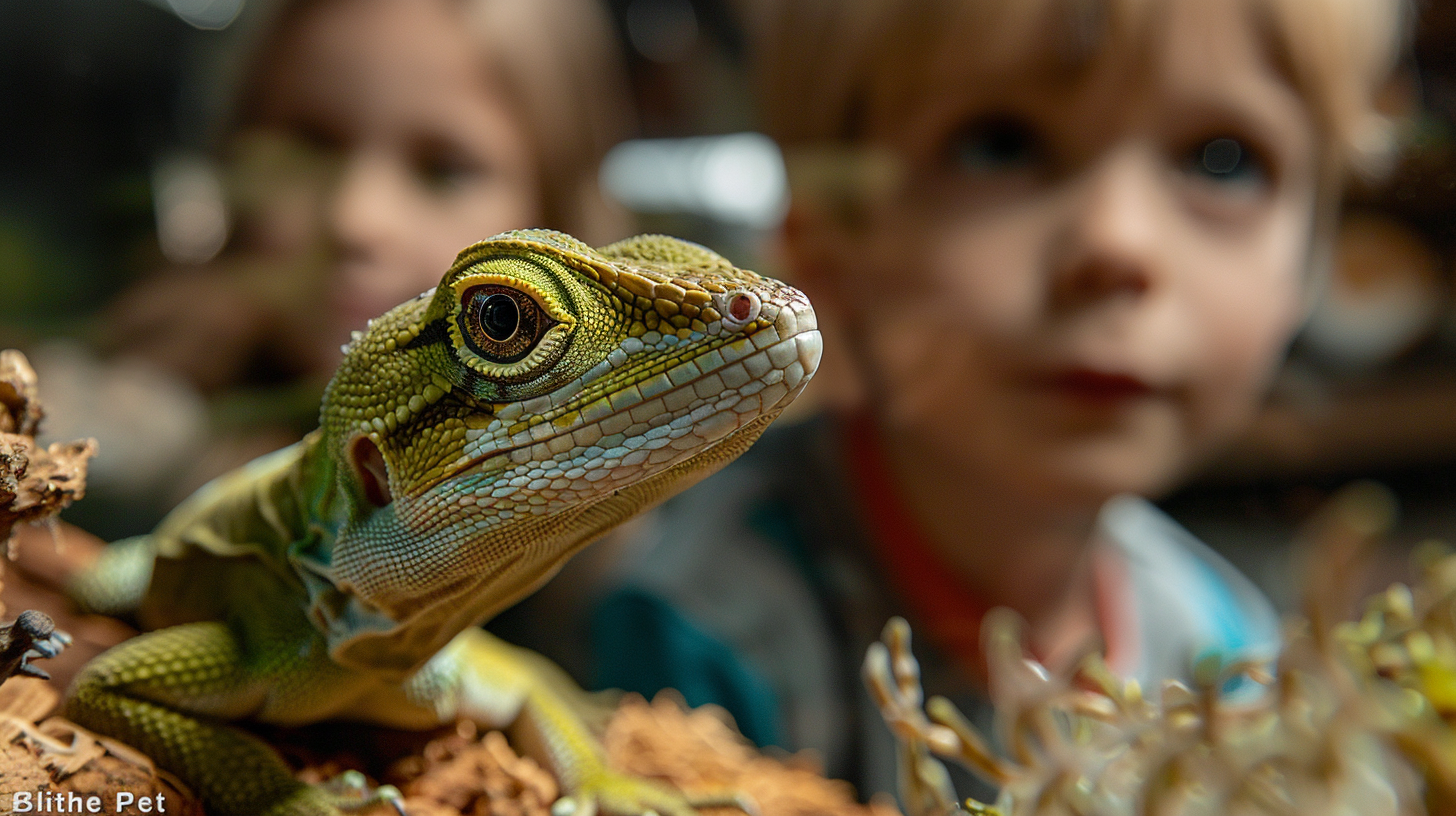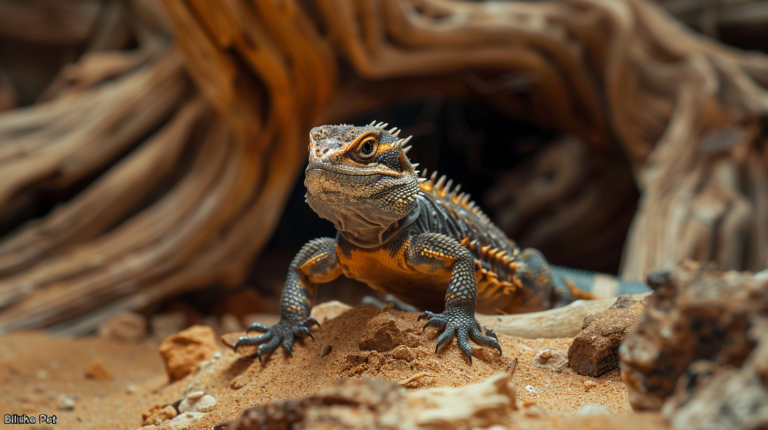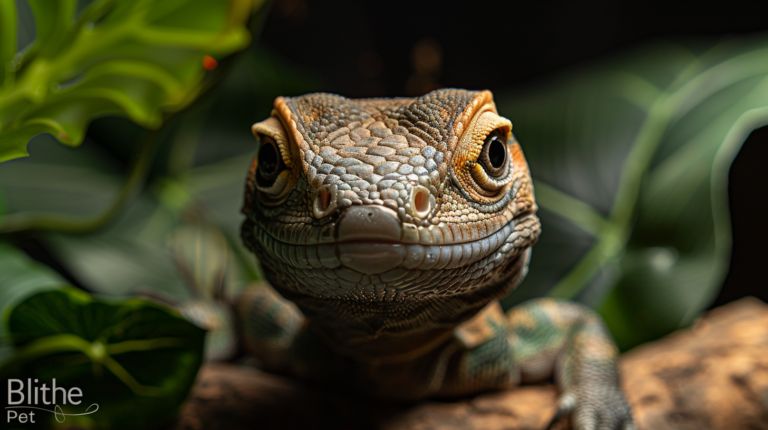Discover the truth about green anoles and safety concerns. Learn if Are Green Anoles Poisonous to humans and pets, plus essential safety tips every pet owner needs to know.
Table of Contents
Did you know that over 76% of reptile owners worry about potential health risks from their pets, yet many don’t know the real facts about their safety? If you’ve ever wondered Are green anoles poisonous? you’re not alone. These vibrant little lizards have captured the hearts of pet enthusiasts across America, but concerns about their safety often hold people back from welcoming them into their homes.
Living in the southeastern United States myself, I’ve encountered countless green anoles in my backyard over the years. When I first moved to Georgia three years ago, I was initially hesitant to let my children play outside after spotting several of these bright green creatures darting across our fence. It wasn’t until I did my research that I realized my fears were completely unfounded – and that these little lizards are actually beneficial neighbors to have around.
Are green anoles poisonous? The straightforward answer is no – green anoles are neither poisonous nor venomous. However, there are three crucial safety considerations every pet owner and parent must understand before interacting with these fascinating reptiles. In this comprehensive guide, we’ll uncover the shocking truths about green anole safety and provide you with evidence-based information to make informed decisions about these remarkable creatures.
For more expert pet care tips and product recommendations, visit BlithePet.com — your trusted source for pet wellness.
Truth #1: Are Green Anoles Poisonous Completely Non-Toxic but Can Carry Diseases

The Science Behind Green Anole Safety
Green anoles (Anolis carolinensis) are not dangerous species and don’t produce any toxins or venom the way some snakes and lizards do. They remain quite small their whole lives and prey on insects, lacking teeth or claws that can do damage to larger creatures. Unlike truly venomous lizards such as the Gila monster or Mexican beaded lizard found in southwestern North America, green anoles pose no direct toxic threat to humans or pets.
Understanding the Difference: Poisonous vs. Venomous
Many people confuse the terms poisonous and venomous, but the distinction is crucial for understanding green anole safety:
- Poisonous animals release toxins when consumed or touched
- Venomous animals inject toxins through bites or stings
Green anoles fall into neither category. These reptiles are small, their teeth are not sharp, and their bites are not powerful nor venomous. Green anole bites rarely break the skin and cause only a mild sting.
The Real Health Concern: Salmonella Transmission
While green anoles aren’t poisonous, they can carry bacterial infections that pose health risks. Scientific studies have found that green anoles can carry Salmonella bacteria, with infection rates varying significantly by location – ranging from as low as 2.1% in some populations to as high as 76.2% in others.
Warning Signs of Salmonella Infection:
- Diarrhea (sometimes bloody)
- Fever and chills
- Abdominal cramps
- Nausea and vomiting
- Symptoms appearing 12-72 hours after exposure
Protecting Your Family
The good news is that with proper hygiene practices, the risk of salmonella transmission is minimal. Always wash your hands thoroughly with soap and warm water after:
- Handling any green anole
- Cleaning their habitat
- Touching anything inside their enclosure
- Being in areas where wild anoles are present
Green Anole Safety Risk Assessment
| Safety Factor | Risk Level | Prevention Method | Action Required |
|---|---|---|---|
| Direct Contact (Healthy Anole) | Low | Hand washing after contact | Soap and water for 20+ seconds |
| Salmonella Transmission | Moderate | Proper hygiene protocols | Immediate hand washing, avoid face touching |
| Pet Consumption by Dogs | Low-Moderate | Supervision, training | Vet consultation if consumption occurs |
| Pet Consumption by Cats | Moderate-High | Indoor housing, supervision | Immediate vet care, monitor for liver fluke symptoms |
| Children Under 5 Exposure | High | No direct contact | Adult supervision, observation only |
| Bite Incidents | Very Low | Gentle handling, stress recognition | Basic wound care, monitor for infection |
| Wild vs. Pet Anole Contact | Variable | Source verification | Higher caution with wild specimens |
Truth #2: Green Anoles Can Affect Your Pets Differently Than Humans
Impact on Dogs
Green anoles are not poisonous to dogs, and even if dogs consume them, it's unlikely to poison them significantly. However, dogs can still get sick from salmonella bacteria and may show symptoms including lethargy, vomiting, and bloody diarrhea.
What to Do If Your Dog Encounters a Green Anole:
- Contact your veterinarian immediately if your dog has bitten or eaten an anole
- Monitor for symptoms of illness for 72 hours
- Provide fresh water to prevent dehydration
- Never induce vomiting unless specifically instructed by a vet
Risks for Cats
Cats face additional risks beyond salmonella transmission. Green anoles can carry parasites called liver flukes that are particularly harmful to cats' liver function if the lizard is consumed. These parasites can cause serious liver complications, including:
- Liver inflammation
- Damage to gall bladder and bile ducts
- Yellow discoloration of eyes and skin
- Loss of appetite and weight loss
Prevention Strategies for Pet Owners
Indoor Safety Measures:
- Keep pet anoles in secure, escape-proof enclosures
- Maintain separate areas for different pets
- Install protective mesh on porches and patios
- Train dogs with the "leave it" command
Outdoor Precautions:
- Supervise pets during outdoor time
- Remove potential anole hiding spots near pet areas
- Keep cat litter boxes clean and covered
- Provide alternative entertainment for hunting-inclined cats
Reptile Safety & Pet Suitability Comparison
| Species | Toxicity Level | Common Diseases | Pet Suitability | Care Difficulty | Lifespan |
|---|---|---|---|---|---|
| Green Anole (Anolis carolinensis) |
Non-toxic | Salmonella, respiratory infections | High | Beginner | 5-8 years |
| Brown/Bahama Anole (Anolis sagrei) |
Non-toxic | Salmonella, parasites | Moderate | Beginner-Intermediate | 4-6 years |
| Cuban Knight Anole (Anolis equestris) |
Non-toxic | Salmonella, metabolic bone disease | Low | Advanced | 8-15 years |
| Gila Monster (Heloderma suspectum) |
Highly venomous | Various bacterial infections | Not recommended | Expert only | 20+ years |
| Blue-tongued Skink (Tiliqua spp.) |
Non-toxic | Respiratory infections, obesity | High | Intermediate | 15-20 years |
| Leopard Gecko (Eublepharis macularius) |
Non-toxic | Impaction, parasites | Very High | Beginner | 15-25 years |
Truth #3: Wild vs. Pet Green Anoles Have Different Risk Profiles
Wild Green Anole Considerations
Wild green anoles pose different challenges than captive-bred pets. Pet store anoles are often fed and raised in similar environments, making it easy for salmonella to spread throughout entire batches of animals. Additionally, wild anoles may have been exposed to various environmental contaminants and disease vectors.
Factors Affecting Wild Anole Health:
- Environmental contamination from other wildlife
- Exposure to agricultural chemicals
- Interaction with feral animals carrying diseases
- Stress from habitat disruption
Pet Green Anoles: Controlled Environment Benefits
When properly cared for, pet green anoles present lower health risks than their wild counterparts. With adequate UVB exposure and proper nutrition, pet anoles can live over 8 years in captivity while maintaining better health than wild specimens.
Advantages of Captive-Bred Anoles:
- Controlled diet and nutrition
- Regular health monitoring possible
- Reduced exposure to wild disease vectors
- Predictable behavior patterns
- Lower stress levels in proper environments
Creating a Safe Pet Environment
Essential Habitat Requirements:
- 10-gallon minimum tank for 1-2 anoles
- Temperature gradient: 75-85°F
- UVB lighting 10-12 hours daily
- Live or artificial plants for climbing
- Shallow water dish for humidity
- Proper substrate for drainage
Feeding Safety Guidelines:
- Source insects from reputable suppliers
- Dust food with calcium supplements
- Avoid wild-caught insects
- Maintain separate feeding areas
- Clean feeding equipment regularly
Expert Tips for Safe Green Anole Interactions
8 Essential Safety Practices
- Always wash hands before and after any contact with anoles or their environment
- Use protective gloves when cleaning habitats or handling sick animals
- Keep separate cleaning supplies for reptile areas vs. other pets
- Never use kitchen sinks for cleaning reptile equipment
- Maintain proper humidity to prevent respiratory issues in captive anoles
- Quarantine new animals for at least 30 days before introduction
- Schedule regular vet checkups with reptile-experienced veterinarians
- Educate all family members about proper handling techniques
When to Consult a Professional
Contact a veterinarian immediately if you notice:
- Changes in anole appetite or behavior
- Signs of respiratory distress
- Unusual skin discoloration
- Lethargy or weakness
- Any signs of illness in pets after anole contact
For Emergencies:
- Pet Poison Helpline: 1-855-764-7661
- ASPCA Animal Poison Control: 1-888-426-4435
Common Mistakes to Avoid
Handling Errors:
- Never grab anoles by their tails (they can detach)
- Avoid sudden movements that cause stress
- Don't handle anoles with open wounds on your hands
- Never allow children under 5 to handle reptiles unsupervised
Environmental Mistakes:
- Using cedar or pine substrates (toxic to reptiles)
- Placing heat sources inside the enclosure
- Overcrowding multiple anoles in small spaces
- Neglecting proper ventilation
Myth-Busting: Separating Facts from Fiction
Myth 1: "All Small Lizards Are Harmless"
Reality: While green anoles are non-toxic, size doesn't determine safety. Some small lizards, like juvenile blue-tailed skinks, can secrete mild toxins through their skin.
Myth 2: "Green Anoles Change Color Because They're Sick"
Reality: Color changing in green anoles is normal behavior responding to temperature, humidity, mood, and environmental factors, similar to but less sophisticated than true chameleons.
Myth 3: "Pet Store Anoles Are Disease-Free"
Reality: Many pet store anoles are actually wild-caught specimens, and batch-raising conditions can facilitate disease transmission between animals.
Step-by-Step Safe Handling Guide
Before Handling
- Prepare the environment - ensure quiet, controlled conditions
- Wash hands thoroughly with antibacterial soap
- Check anole behavior - avoid handling stressed or hiding animals
- Have escape containment ready - anoles are quick and agile
During Handling
- Move slowly and deliberately to avoid startling the animal
- Support the body - never grab by tail, head, or single limb
- Keep sessions brief - limit to 5-10 minutes maximum
- Stay close to surfaces - handle over soft areas in case of drops
After Handling
- Return anole gently to its habitat
- Wash hands immediately with soap and warm water for 20+ seconds
- Disinfect any surfaces the anole may have contacted
- Monitor for any signs of stress in the animal
Understanding Green Anole Behavior and Safety Signals
Stress Indicators
Recognizing stressed anoles helps prevent defensive behaviors:
- Rapid color changes to brown or gray
- Puffed-out dewlap display
- Rapid breathing or gaping mouth
- Attempts to flee or hide
- Aggressive posturing
Healthy Behavior Signs
Well-adjusted anoles display:
- Bright green coloration during active periods
- Regular basking behavior
- Normal feeding responses
- Calm movement patterns
- Proper sleeping positions
Environmental Factors Affecting Behavior
Temperature Influence: Anoles become sluggish in cool temperatures and hyperactive when overheated. Maintain proper temperature gradients to promote natural behavior.
Humidity Impact: Low humidity causes stress and health problems. Maintain 60-70% humidity for optimal anole comfort.
Light Cycles: Green anoles are diurnal animals requiring 10-12 hours of full-spectrum UV lighting daily to maintain healthy day/night cycles and vitamin D production.
Special Considerations for Families with Children
Age-Appropriate Interactions
Children Under 5: Should never handle reptiles directly due to higher salmonella susceptibility and immune system vulnerability.
Ages 5-12: Can participate in supervised care activities like feeding and observation, with mandatory hand washing protocols.
Teenagers: Can assume full care responsibilities with proper education and safety training.
Educational Opportunities
Green anoles provide excellent learning experiences about:
- Reptile biology and behavior
- Ecosystem roles and conservation
- Responsibility and pet care
- Scientific observation skills
Creating Safe Learning Environments
- Use observation windows instead of direct handling for young children
- Implement family hand-washing stations near reptile areas
- Establish clear rules about reptile interaction
- Provide educational materials about reptile safety
Emergency Preparedness and First Aid
Salmonella Exposure Response
If you suspect salmonella exposure:
- Monitor symptoms for 72 hours after contact
- Stay hydrated with clear fluids
- Contact healthcare providers if symptoms develop
- Avoid preparing food for others during illness
- Practice strict hygiene to prevent spread
Bite Treatment Protocol
Although rare and typically harmless:
- Clean the wound with soap and warm water
- Apply antiseptic to prevent secondary infection
- Monitor for signs of infection (redness, swelling, warmth)
- Seek medical attention if symptoms worsen
When to Seek Professional Help
Contact veterinary or medical professionals for:
- Persistent symptoms lasting more than 3 days
- High fever (over 101.3°F in humans)
- Signs of dehydration
- Severe abdominal pain
- Blood in stool
Frequently Asked Questions About Green Anole Safety
Conclusion:
Bottom Line: Green anoles are not poisonous and pose minimal risk to humans and pets when proper safety protocols are followed. The key to safe interaction lies in understanding that while these lizards are non-toxic, they can carry bacteria that require simple preventive measures.
The three shocking truths we've revealed demonstrate that green anoles are far safer than many people believe, but responsible ownership and interaction remain essential. With proper hygiene practices, appropriate habitat management, and basic safety awareness, green anoles can be wonderful pets and fascinating wild neighbors.
Whether you're considering adding a green anole to your family or simply want to coexist peacefully with wild populations in your area, remember that education and preparation are your best tools for ensuring safe, enjoyable experiences with these remarkable reptiles.
Have a similar experience with your pet? Share it in the comments below! Don't forget to check out our other helpful guides at BlithePet.com.







